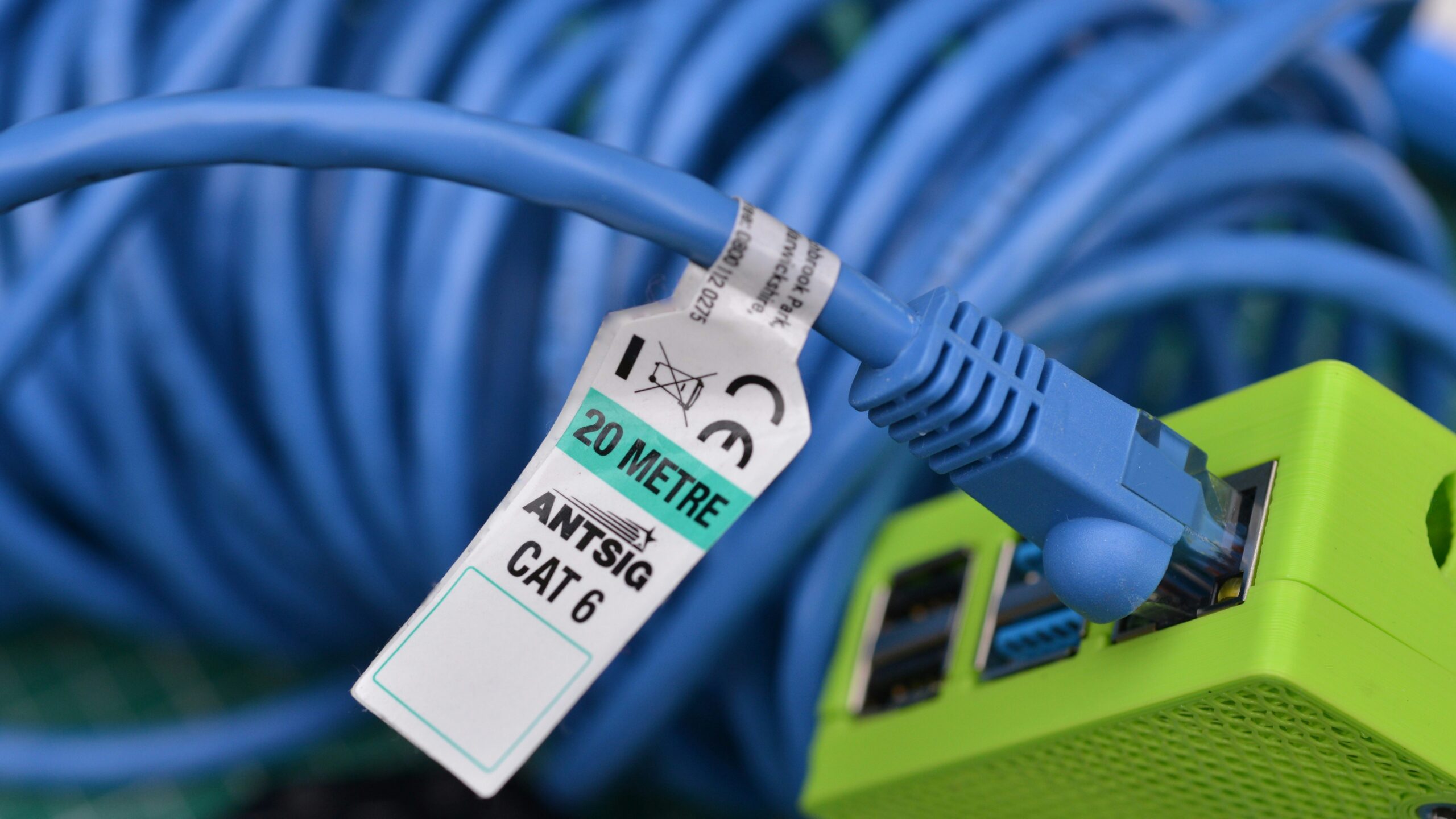The Advantages of Cat6 Cables
In the realm of networking, Cat6 cables present significant advantages that make them an essential choice for both home and business environments. One of the standout features of Cat6 cables is their capacity to support data transfer speeds of up to 1 GBPS, which is crucial for modern applications that demand high bandwidth. These cables are designed to handle not only standard internet browsing but also tasks that tend to consume large amounts of data, such as HD video streaming and large file transfers. As more households and businesses transition towards high-definition content and large data workloads, the importance of using quality cabling cannot be overstated.
Another advantage of Cat6 cables lies in their enhanced bandwidth capabilities. With a bandwidth of up to 250 MHz, Cat6 cables provide substantially better performance compared to their predecessors, such as Cat5 and Cat5e cables, which are limited to 100 MHz. This increased bandwidth allows for better transmission of data, reducing interference and crosstalk. The result is a more robust and reliable networking experience, which is particularly beneficial in environments where multiple devices are connected simultaneously, such as offices or homes with smart devices.
さらに, the sturdy construction of Cat6 cables ensures durability and longevity, making them a worthwhile investment for anyone looking to future-proof their networking infrastructure. これらのケーブルで使用される改善された材料は、パフォーマンスを向上させるだけでなく、時間の経過とともに信号の品質を損なう可能性のある潜在的な摩耗や裂け目から保護します. 要約すれば, より高いデータ転送速度の組み合わせ, 帯域幅の増加, 耐久性のある構造により、CAT6ケーブルは、信頼できる効率的なネットワーキングソリューションを求めるユーザーにとって理想的な選択肢になります.
CAT6ケーブルの技術的特徴
CAT6ケーブル, ネットワーキングテクノロジーの進歩, データ送信を強化するために設計された優れた技術的機能によって区別されます. その有効性に貢献する主な要素の1つは、高度なシールド技術の使用です. CAT6ケーブルは、しばしばシールドされていないねじれたペアの組み合わせを組み込んでいます (UTP) そして、シールドされたねじれたペア (STP), 電磁干渉を大幅に最小限に抑えます (エミ) and radio frequency interference (RFI). This shielding is crucial in environments with multiple electronic devices that could disrupt signal quality.
さらに, Cat6 cables feature tighter twisting intervals compared to their predecessors, such as the Cat5e. This tighter twisting of the cable pairs helps to reduce crosstalk, which is the interference caused by adjacent cable pairs. As a result, the transmission standards of Cat6 cables allow for a maximum length of 100 meters while maintaining high data transfer rates, reaching up to 10 Gbps over shorter distances. This capacity makes Cat6 cables suitable for data-intensive applications, including video conferencing, cloud computing, and large data uploads or downloads.
Another significant technical specification of Cat6 cables is their ability to support frequencies up to 250 MHz, which enhances the overall performance of network connections. This wider bandwidth allows for greater data throughput, enabling users to experience faster and more reliable internet connections. The high performance of Cat6 cables is essential in modern networking environments where speed and reliability are paramount.
結論は, the combination of advanced shielding techniques, tighter twisting intervals, and a higher frequency range positions Cat6 cables as a preferred solution for anyone seeking stable and efficient network infrastructure. Their technical features contribute to an enhanced user experience in a world increasingly reliant on high-speed internet connectivity.
Compatibility and Future-Proofing with Cat6 Cables
Cat6 cables are designed to provide enhanced performance and higher data transfer rates compared to their predecessors, particularly Cat5e cables. One of the most notable features of Cat6 cables is their backward compatibility. This means that Cat6 cables can be used in systems that were originally designed for Cat5e, allowing for a seamless transition without the need for major upgrades to existing hardware. This compatibility ensures that users do not need to replace their entire network infrastructure when choosing to upgrade their cabling.
The primary advantage of using Cat6 cables over Cat5e pertains to their ability to support higher bandwidths, up to 250 MHz compared to Cat5e’s 100 MHz. さらに, Cat6 cables can deliver faster data transmission speeds, reaching up to 10 Gbps over short distances. This improved performance is particularly beneficial for environments that require high-speed internet and efficient data transfer, such as data centers and office networks. As organizations continue to adopt more advanced technological solutions, the superior specifications of Cat6 cables become increasingly essential.
Looking towards the future, Cat6 cables also demonstrate a level of forward compatibility, meaning they have the potential to support future networking standards. As technology continues to evolve, the demand for higher speeds and greater bandwidth is expected to grow. Investing in Cat6 cabling ensures that networks remain capable of accommodating emerging technologies, minimizing the need for frequent upgrades. この長期的な実行可能性は、CAT6ケーブルが現在のソリューションとしてだけでなく、個人的および専門的なネットワーキングのニーズのための将来のプルーフオプションとしても位置付けています.
適切なCAT6ケーブルの選択: 考慮すべき要因
ネットワーキングのニーズに合わせてCAT6ケーブルを選択するとき, 最適なパフォーマンスと互換性を確保するために、いくつかの重要な要因を考慮する必要があります. 最初に, ケーブルの仕様は重要です. CAT6ケーブルは速度をサポートできます 10 最大のGBPと帯域幅 250 MHz, 高速ネットワークに適したものにします. しかし, ケーブルの長さも考慮することが不可欠です; より長いケーブルは、信号の劣化につながる可能性があります. CAT6ケーブルの最大有効長はです 328 足 (100 メーター). より長い距離が必要なインストール用, consulting with a networking expert can ensure the best solution is utilized to mitigate any potential losses.
Customized labeling and packaging can play a significant role in branding and usability. Opting for cables with clear, identifiable labeling allows for efficient management and easier troubleshooting. さらに, aesthetically pleasing packaging can enhance brand visibility and consumer confidence while facilitating distribution in retail environments.
Environmental considerations are increasingly important when selecting networking cables. Choosing Cat6 cables with durable outer protective layers not only ensures longevity but also helps contribute to sustainability efforts. Many manufacturers now offer eco-friendly options, which use recyclable materials in construction and packaging practices. This focus on durability can also translate into cost savings in the long run, as more durable cables are less likely to require frequent replacement.
ついに, competitive pricing should not be overlooked. While cost alone should not determine the choice of cables, it is prudent to compare pricing among various suppliers, taking into account the warranty, reputation, and customer service of the supplier. By evaluating all these factors—specifications, labeling, environmental sustainability, and pricing—readers can make informed choices when purchasing Cat6 cables for their networking requirements.

